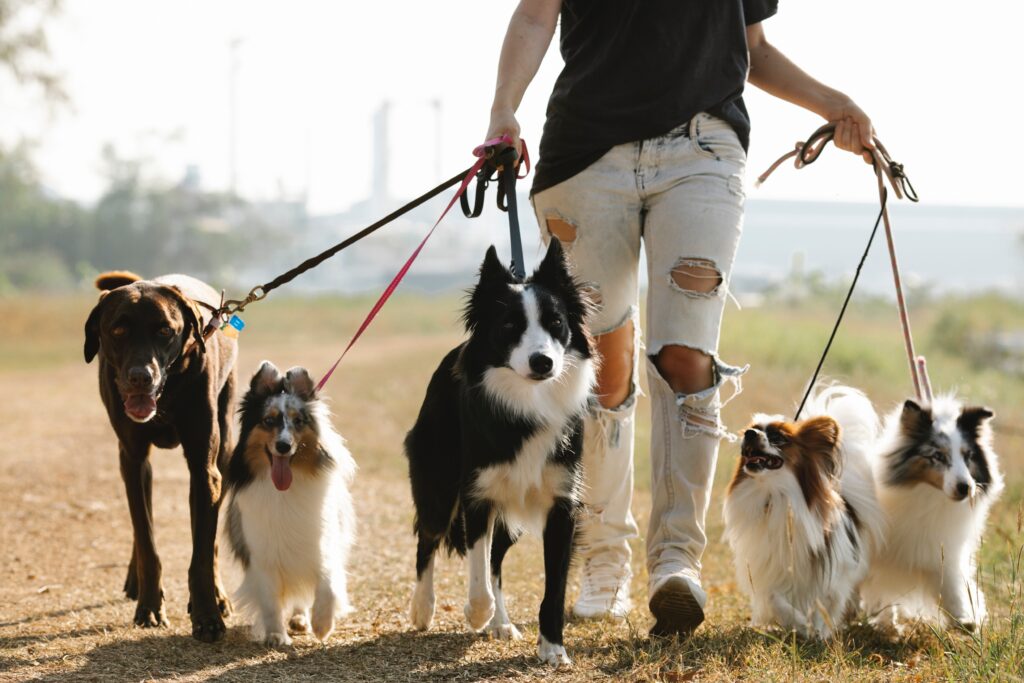Dogs are known for their loyalty, love, and companionship, and some breeds are particularly renowned for their friendly and affectionate nature. You might love the way your micro bulldogs greet people they don’t know, and the Golden Retriever is often described as the ultimate family dog, known for their gentle nature, love of children, and eagerness to please their owners. Similarly, the Labrador Retriever is known for their friendly disposition, loyalty, and intelligence, making them a popular choice for families, individuals, and even law enforcement agencies.
There are other breeds that are often described as friendly including the Beagle, Boxer, Cavalier King Charles Spaniel, and Poodle, among others. While all dogs are individuals with unique personalities, these breeds are often considered to be the friendliest and most sociable of all canine companions.
Not all dogs are friendly, however, and not all dog owners are responsible. Whether you encounter a dog on the street or visit a friend who has a new canine companion, it’s important to know how to stay safe around unfamiliar dogs. Here are some safety tips to keep in mind:
Don’t approach a dog without the owner’s permission
It’s important to remember that dogs are territorial animals and may view strangers as a potential threat. Before approaching a dog, always ask the owner’s permission first. Even if the dog appears friendly, the owner may know that the dog has a history of aggression or fear towards strangers.
Observe the dog’s body language
Dogs communicate through their body language, so it’s important to pay attention to their cues. If a dog’s ears are pinned back, its tail is between its legs, or they are growling or baring its teeth, these are signs that the dog may be feeling threatened or aggressive. It’s best to give the dog space and avoid approaching them.
Avoid direct eye contact
Eye contact can be interpreted as a challenge or threat by dogs, so it’s best to avoid staring at an unfamiliar dog. Instead, try to stay relaxed and avoid sudden movements or loud noises that may startle the dog.
Keep your distance
Even if a dog appears friendly, it’s best to keep a safe distance until you get to know the dog’s personality and behavior. Dogs can be unpredictable, and it’s important to give them space and respect their boundaries.
Don’t run away
If a dog does become aggressive or begins to chase you, it’s important not to run away. Running can trigger a dog’s prey drive and make the situation worse. Instead, try to remain calm and still, and slowly back away while avoiding direct eye contact.
Know how to protect yourself
In the unlikely event that a dog does attack, it’s important to know how to protect yourself. Try to put an object, such as a purse or backpack, between you and the dog to act as a barrier. If the dog knocks you down, curl into a ball and protect your head and neck with your hands and arms.
Teach children how to behave around dogs
Children are particularly vulnerable to dog bites, so it’s important to teach them how to behave around dogs from an early age. Children should be taught to always ask permission before approaching a dog, to avoid direct eye contact and sudden movements, and to avoid touching a dog’s face or head.
Be cautious around unfamiliar dogs
It’s important to remember that even well-behaved dogs can become aggressive in certain situations, such as when they are protecting their territory or their owner. It’s best to be cautious around unfamiliar dogs and to avoid petting or approaching them until you know the dog’s behavior and temperament.
Report aggressive or stray dogs
If you encounter a stray dog or a dog that appears aggressive or dangerous, it’s important to report the incident to animal control or local authorities. This can help prevent future incidents and keep your community safe.
Respect the dog’s boundaries
Finally, it’s important to respect a dog’s boundaries and avoid behaviors that may be interpreted as threatening or aggressive. Avoid reaching out to pet a dog without permission, avoid hugging or kissing a dog’s face, and avoid cornering or trapping a dog in a small space.
In conclusion, staying safe around unfamiliar dogs requires caution, respect, and knowledge of canine behavior. By following these safety tips, you can reduce your risk of being bitten or attacked by an unfamiliar dog and enjoy the company of a man’s best friend in a safe and responsible manner.
Photo by Blue Bird: https://www.pexels.com/photo/unrecognizable-woman-walking-dogs-on-leashes-in-countryside-7210754/

